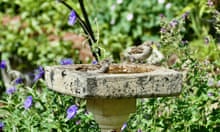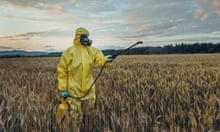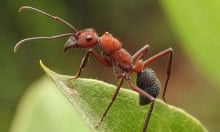The European food safety authority (Efsa) based a recommendation that a chemical linked to cancer was safe for public use on an EU report that copied and pasted analyses from a Monsanto study, the Guardian can reveal.
Glyphosate is the core ingredient in Monsanto’s $4.75bn (£3.5bn) a year RoundUp weedkiller brand and a battle over its relicensing has split EU countries, with a final decision on its authorisation expected in early November.
That decision will largely be informed by an Efsa opinion, which is based on a 4,300-page renewal assessment report (RAR) published in 2015.
In June, Efsa said that where the RAR was concerned, “every scientific study is scrutinised for relevance and reliability by EU risk assessors based on the evidence contained within the study”.
But dozens of pages of the paper are identical to passages in an application submitted by Monsanto on behalf of the Glyphosate Task Force (GTF), an industry body led by the company.
These sections analyse peer-reviewed studies into links between glyphosate and genotoxicity (how likely it is to cause cell mutations), carcinogenicity and reproductive damage.
Franziska Achterberg, Greenpeace EU’s food policy director, said: “Whether this is a question of negligence or intent, it is completely unacceptable.
“It calls into question the entire EU pesticide approval process. If regulators rely on the industry’s evaluation of the science without doing their own assessment, the decision whether pesticides are deemed safe or not is effectively in the industry’s hands.”
Efsa insists that it has a “robust, well-balanced independence policy” and that it views the RAR as separate from the authority’s conclusion which follows it. The RAR is prepared by an EU state’s regulator – in this case Germany’s BfR – rather than Efsa itself.
An Efsa spokesperson said: “It is important to stress that these are extracts from and references to publicly available studies submitted by the applicant as part of their obligation under the pesticide legislation to carry out a literature search. In other words, these are not Glyphosate Task Force studies but rather studies available in the public scientific literature.”
Even so, the Efsa paper repeats descriptions – and analyses – verbatim from the 2012 GTF review. One of these, by former and current Monsanto employees John Acquavella and Donna Farmer, challenges the results of a study which found an association between pesticide use and non-Hodgkin lymphoma.
It says: “The major limitations of this study were: the reliance on reported pesticide use (not documented exposure) information, the small number of subjects who reported use of specific pesticides, the possibility of recall bias, the reliance on secondary sources (next-of-kin interviews) for approximately 43% of the pesticide use information, and the difficulty in controlling for potential confounding factors, given the small number of exposed subjects.”
Some other sections are differentiated from the GTF paper by additions of text and reference numbers, different marking of headings and tables, capitalisations, changes from US to British spelling and some text cuts.
Most paragraphs dealing with peer-reviewed papers, though, are copied word for word. A Monsanto spokesperson said that Efsa allowed renewal reports to be written this way because of the large volume of toxicological studies submitted.
“There was an explanation by Efsa that direct passages from the industry application were included,” the spokesperson said. “This should by no means be understood as Efsa’s conclusion on glyphosate.”
The row over glyphosate’s safety has pitted scientists against each other – and regulators – with one branch of the World Health Organisation assessing that the substance was unlikely to be carcinogenic, while another ruled that it probably was.










